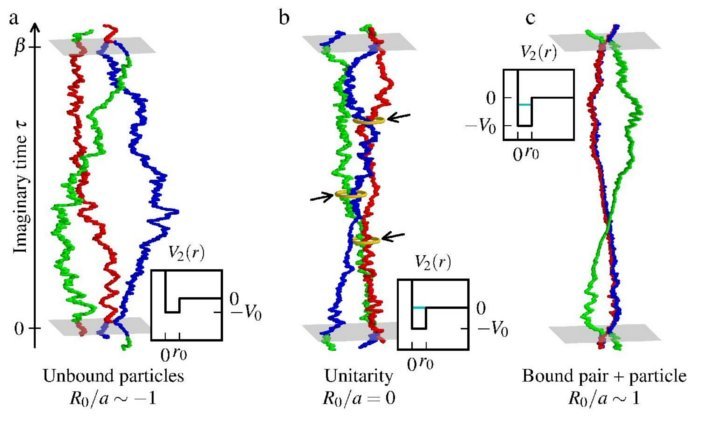Piatecki Krauth 2013
From Werner KRAUTH
S. Piatecki and W. Krauth Efimov-driven phase transitions of the unitary Bose gas arXiv 1307.4671
Contents |
Paper
Abstract In quantum physics, Efimov trimers are bound states of three particles that fall apart like Borromean rings when one of them is removed. Initially predicted in nuclear physics, these striking bosonic states are hard to observe, but the "unitary" interactions at which they form is commonly realized in current cold atoms experiments. There, they set the stage for a new class of universal physics: Two-body interactions are all but invisible, but three-body effects allow the emergence of a largely uncharted new world of many-particle bound states. Three-particle systems were characterized theoretically, and the ground-state properties of small unitary clusters computed numerically, but the macroscopic many-body behaviour has remained unknown. Here we show, using a Path-Integral Monte Carlo algorithm backed up by theoretical arguments, that the unitary Bose gas presents a first-order phase transition from a normal gas to a superfluid Efimov liquid. The normal gas is very well described by the available virial coefficients. At unitarity, the phase diagram of the bosonic system is universal in rescaled pressure and temperature. A triple point separates the normal gas, the superfluid Efimov liquid, and a third phase, the conventional superfluid gas. These two superfluid phases are separated by a critical line that ends in a critical point at high temperature. This rich phase diagram should allow for a number of experimental protocols that would probe these universal transitions between the normal gas, the superfluid gas, and the superfluid Efimov liquid.
Electronic version (from arXiv, original version)
Supplementary information (from arXiv, original version)

